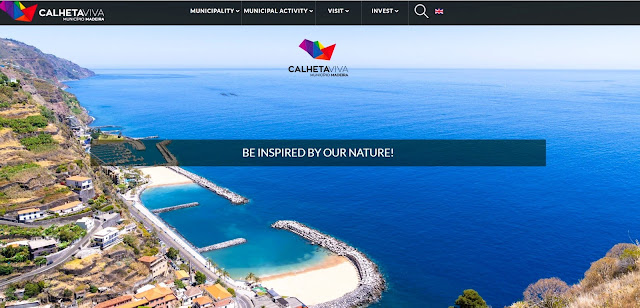CALHETA
(MUNICIPALITY)
32°43′33″N 17°9′57″W
Calheta is a Portuguese municipality on the island of Madeira, Autonomous Region of Madeira, based in the homonymous village of Calheta from which it received its name. It has an area of 115.65 km² and 11,521 inhabitants (2011), subdivided into 8 parishes.
The municipality is limited to the northwest by the municipality of Porto Moniz, to the northeast by São Vicente and to the east by Ponta do Sol, being bathed by the Atlantic Ocean to the south and west.
Toponymy
Two different circumstances are linked to the origin of the name Calheta: the first reports the existence of a small bay with the current name; the second is because the village was a place where taxes on sugar and wood were collected.
History
The municipality of Calheta is the largest in Madeira in terms of extension. It was the area chosen by João Gonçalves Zarco, the discoverer of Madeira, to make a large donation of land to his son João Gonçalves da Câmara and D. Beatriz Gonçalves.
Parishes
Arco da Calheta: 3,241 inhabitants.
Calheta: 3,105 inhabitants.
Estreito da Calheta: 1,630 inhabitants.
Fajã da Ovelha: 1,016 inhabitants.
Jardim do Mar: 252 inhabitants.
Paul do Mar: 885 inhabitants.
Ponta do Pargo: 1,145 inhabitants.
Prazeres: 672 inhabitants.
For statistical and administrative purposes, and to differentiate it from the homonymous village in the Azores, it is customary to designate Calheta dos Açores as Vila da Calheta. At the same time, Madeira is simply known as Calheta.
Patrimony
Capela dos Reis Magos
Centro das Artes - Casa das Mudas
Igreja Matriz do Espírito Santo
Igreja de São Francisco Xavier
Capela de São Francisco Xavier
Capela de Santo António dos Milagres
Vestígios do Convento
Quinta da Estrela - Casa da Família Pimenta
Forno da Cal
Capela de Nossa Senhora do Bom Sucesso
Capela de São João Baptista ou Capela de São Pedro de Alcântara
Capela de Jesus, Maria, José
Capela de São José
Economy
Agriculture and the fishery provides the primary sources of income in this area, although minor commercial establishments are concentrated in the principal village in the municipality. Agriculture was the first industry to develop in this region; the production/cultivation of bananas, wine, horticulture and sugar cane developed as the main export products. The fishery supported the populations of Paúl do Mar and the vila of Calheta, although fishermen existed throughout the municipality.
Industrial activity has changed throughout the region and has developed through cycles, including the dairy industry, fireworks, salt, beekeeping, and sugar cane refinement, which have all undergone peaks and troughs. Of these, for example, the factory/ironworks used for conversion of honey into aguardente, a distilled spirit common in the village of Calheta and the fireworks buildings in the Lombo do Doutor were integral businesses in the municipality development.
Education
While the communities of Calheta do have two secondary schools (EBSC and EBSP), higher education facilities are located in Funchal. There are four main primary schools offering instruction for children: EB1 Ladeira e Lamaceiros and EB1 Lombo do Guiné (both in Arco da Calheta), EB1 Lombo do Atouguia and EB1 Calheta, EB1 Estreito da Calheta, as well as the kindergarten, JI Apresentação da Estrela run by catholic nuns (in Calheta). In the parish of Ponta do Pargo, Maria Amélia de Sousa, provided educational instruction, at the primary level, for many of the children of the western coast of Calheta, lasting 70 years. This formalized education was unique for including children of both sexes.
How to get here
With Funchal as reference, it is necessary to go on to the Via Rápida (VR 1) towards Ribeira Brava. Once you arrive in Ribeira Brava, follow the Via Expresso (VE 3) that connects to the southwest coast towards Calheta.
With the excellent views, especially of the Ocean, that accompany you along this route we recommend a calm drive (no speeding).
If so, it should take you around 30 minutes to the center of Calheta, an excellent starting point for your exploration of our Municipality.
Activities
https://www.cmcalheta.pt/en/visit/activities
💓💓💓💓💓
SEARCH
IN CALHETA MUNICIPALITY
Calheta;
Arco da Calheta;
Estreito da Calheta;
Jardim do Mar;
Prazeres;
Paul do Mar,
Fajã da Ovelha;
Ponta do Pargo;
Return to mainland Portugal and
to the Azores and Madeira islands

.jpg)







No comments:
Post a Comment